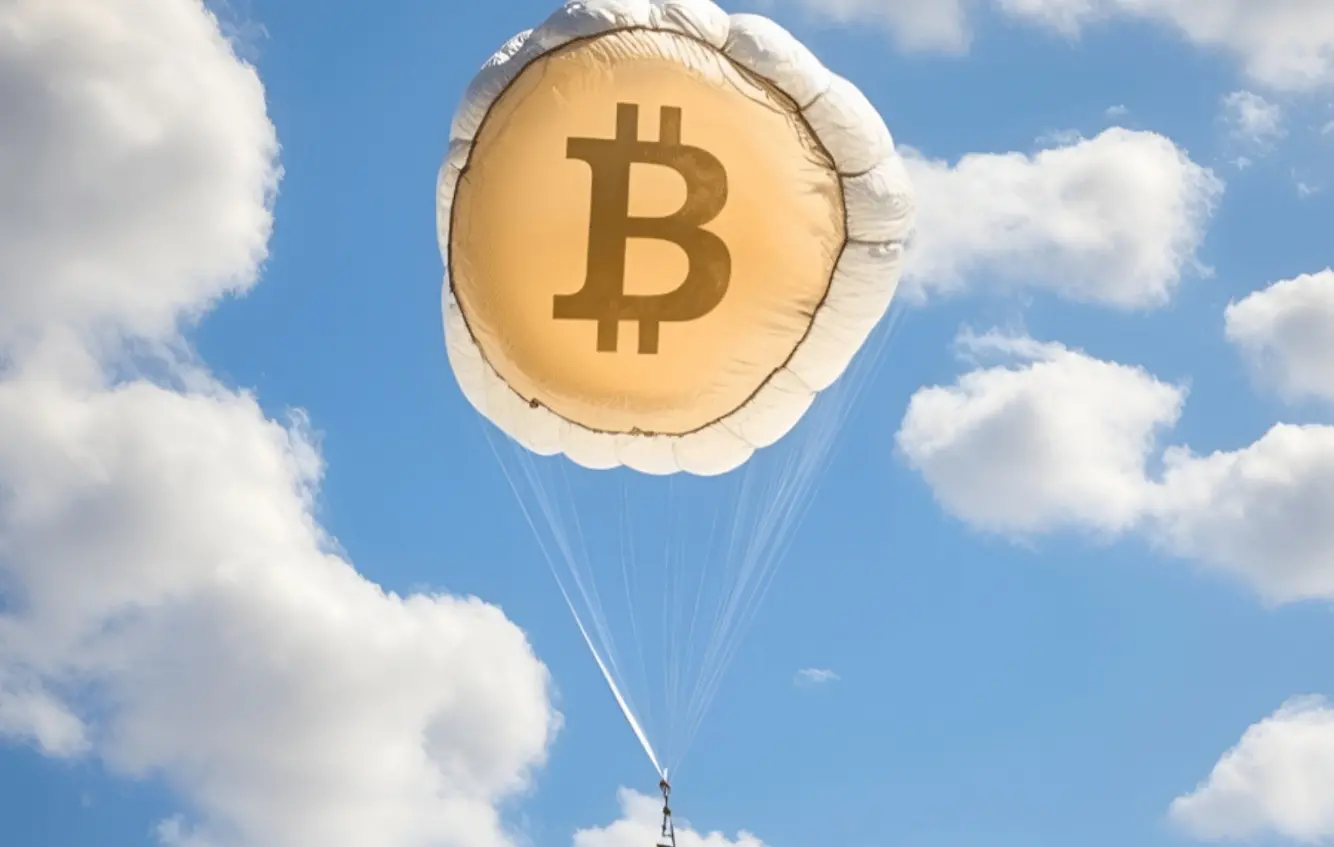With high inflation and selling pressure from private equity, can Berachain still stabilize market expectations?
Original Title: "A long thread about my thoughts regarding Berachain's current situation"
Author: Ericonomic, Three Sigma Author
Translation: Ashley, BlockBeats
Editor’s Note: As one of the most talked-about Layer 1s recently, Berachain's PoL mechanism has attracted a large number of developers and investors. However, with the launch of the Berachain mainnet, issues such as inflation, private placement distribution, and changes in staking rules have also sparked controversy. The author combines his own research to analyze the current situation of Berachain in depth, exploring its potential risks and development prospects.
The following is the original content (reorganized for better readability):
Thoughts on the Current Situation of Berachain
Many friends know that I have been active in the Berachain ecosystem and have invested a lot of time and energy. After going through all of this, I feel it is necessary to share my true thoughts on the launch of Berachain, its current situation, and future development.
I will start with some aspects I am not very satisfied with:
$BERA Inflation Issues
This is my biggest concern, as it will directly affect price performance.
The annual inflation rate of BGT is 10% of the total supply (total supply = 500 million; first-year inflation = 50 million).
The circulating supply in the first year is about 21.5% (110 million tokens) + 2% released by Boyco within 30-90 days. In this case, 50 million in inflation means that if all BGT were to be burned (which realistically won't happen), the first-year inflation rate would be close to 50%. By the end of the first year, the circulating tokens will reach about 170 million.
Inflation in the second year: BGT will still maintain a 10% inflation rate (55 million), plus 196 million tokens released through different distribution methods (the largest portion coming from private investors). This means that by the end of the second year, the circulating supply will reach 418 million, with an inflation rate of about 150%.
While most L1s have high inflation in their early stages, Berachain's inflation rate is much higher than other projects. Moreover, this comparison is not favorable for Berachain, as the price performance (PA) of many projects has been severely impacted by high inflation. Therefore, this cannot serve as a reasonable excuse for Berachain's high inflation.
$BERA Private Placement Investors
Berachain sold over 35% of its token supply to private investors (I previously thought it was only 20%).
- Seed Round: 50M FDV
- Second Round: 420M FDV
- Final Round: 1.5B FDV
This means there are a large number of tokens in the market from private financing.
Most projects have a private placement allocation of about 20%, and I already considered this ratio too high, detrimental to project development. Berachain's private financing ratio is even higher, combined with a long vesting period, leading to continuous selling pressure in the market, which usually keeps token prices in a long-term downtrend, especially in cases of high FDV and low circulation (high FDV, low circulation).
$BERA Staking (for Private Placement Investors)
While this is not an extremely negative factor (but honestly, I don't like it), it should be better explained.
Private investors can stake $BERA to earn liquidity rewards and then sell them (in other words, they can stake $BERA to get more $BERA).
15% of the annual inflation of BGT (7.5 million BGT) will be allocated to validators, most of which will flow to stakers. If all 500 million supply were staked, the annual percentage yield (APY) would be about 1.6%, but in reality, it is impossible to stake all.
The actual staking ratio may be around 60%, so the APY is approximately between 2.8% - 3.2%.
Many people compare Berachain with Celestia, but Celestia's early APY was about 20%, so this comparison is not very reasonable. At the same time, while anyone can stake $BERA to earn rewards, thus diluting the APY of private investors, this staking mechanism will still increase selling pressure.
Temporary Changes + Poor Whitepaper
What I am most dissatisfied with is that the $BERA staking mechanism was only made public a few weeks ago, and even now, if you want to find relevant information, it takes a lot of time to find meaningful details.
This mechanism is crucial for market sentiment, especially in the current market environment and the rising anti-VC sentiment; it should have been disclosed earlier and more transparently, and detailed in the official documentation on the first day.
It wasn't until Jack posted an explanation that the community became aware of this issue, leading to FUD and disappointment among OGs towards Berachain, even making them reluctant to hear any news about Berachain.
To be honest, this makes me very angry, as it feels like they intentionally revealed this staking mechanism at the last moment (otherwise, why not include it in the official documentation?). However, upon understanding the situation, I found that the APY is only 3%, which feels more like a communication error rather than malicious concealment.
No PoL Yet
The core product of Berachain is PoL, and if PoL is not launched, then Berachain is just another PoS fork, and the current situation indeed reflects that.
I believe this won't last long (I hope so), but since BGT currently has no real use, many people feel disappointed and may not attempt to understand Berachain's design in the future.
As far as I understand, this is a necessary step to ensure that Berachain can operate stably before fully deploying PoL, and I don't know if there is a better solution. But the problem is that they must complete the PoL deployment as soon as possible and cannot delay for too long.
DevBear Selling Tokens
Berachain's co-founder DevBear is selling tokens from a real-name address. He received about 200,000 $BERA from the airdrop (which is itself unreasonable, as the airdrop rules were set by them), and then he exchanged some of the tokens for assets like WBTC, ETH, BYUSD, etc.
Even if he didn't sell, it is still not good for core team members to receive such a large airdrop.
He may be testing the product or providing liquidity, but in any case, this issue should be clarified immediately.
Berachain Still Has Highlights
Strong Berachain Community
The Berachain community is one of the strongest communities in the entire industry. I have been in this industry for many years, and I can confirm this. Even if the project has issues, the community and developers will still do their best to support the development of Berachain.
Large Dapp Ecosystem
The developer ecosystem of Berachain is very active, having built, tested, and deployed a large number of Dapps, which will be launched in the coming weeks.
Every public chain needs a strong application ecosystem to succeed, and Berachain has these Dapps in its early stages, which is the main reason I still hold an optimistic view on its mid-term development.
High Emphasis on Security
In the development of new mechanisms and new public chains, security is often a major concern. For a brand new project like Berachain, the importance of security is even more amplified. One thing I appreciate is that the Berachain Foundation places great importance on security issues; they pay attention to every detail and choose a stable and secure way to advance the network's launch and decentralization.
While most people do not like slow progress, I believe this is a positive approach.
PoL Mechanism
I still think PoL is a very interesting mechanism, and once it is fully deployed and the flywheel effect is activated, we will see very attractive APYs that will draw a large number of liquidity miners into the Berachain ecosystem.
Conclusion
I am quite sure that simply holding $BERA is not a good idea, due to the various factors I mentioned earlier. But at the same time, I am also confident that participating in the PoL liquidity proof mechanism will be a very worthwhile choice.
I prefer to view Berachain as a yield chain rather than a chain that simply holds non-productive tokens. You need to provide liquidity, engage in recycling, lending, research the best BGT earning strategies, and conduct due diligence on each validator to see who to delegate your BGT to, or whether it is more worthwhile to burn BGT for automatic compounding. On Berachain, you must actively participate rather than just hold tokens.
In my view, the most critical thing is to introduce liquidity and activate the flywheel effect. If this step is successful, Berachain can succeed.
Before concluding this reflection, I want to say that I have always believed Berachain is a refreshing stream with cultural and moral value in an industry filled with scams. Therefore, seeing it go through this "less than ideal" launch and some "ambiguous" adjustments (such as changes to the BERA staking rules) does make me somewhat disappointed. But then again, if the foundation and developers can continue to work hard like they have in the past few years, Berachain still has the opportunity to become the chain with the highest yields, far surpassing other similar projects.










